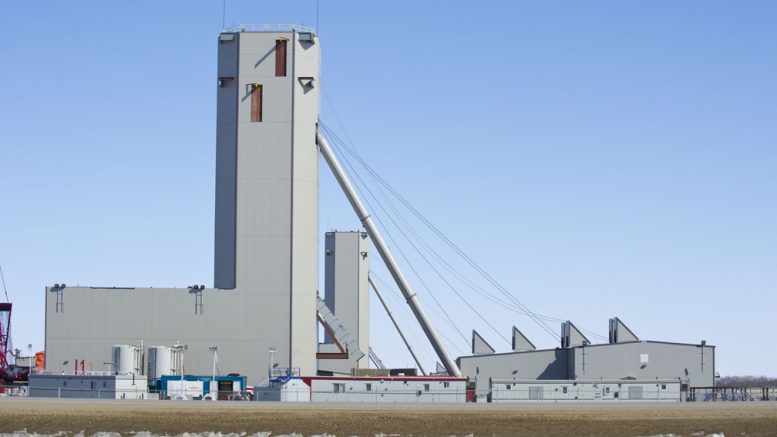BHP (NYSE: BHP; LSE: BHP), the world’s largest miner, will decide whether to go ahead with its long-delayed multi-billion dollar Jansen potash project in Canada by mid-2021, about a decade after completing a feasibility study on the operation.
The company had planned to make an investment decision in February 2021, but delays relating to the completion of shafts have pushed out the date by a few months.
BHP said initial challenges with the placement of shaft lining, which have been rectified, as well as the group’s Covid-19 response plan, impacted Jansen’s progress during the second quarter.
The project is 86% completed, the mining giant said, adding that it has earmarked US$2.7 billion to finish excavation and lining of the production and service shafts. The figure, part of a previously disclosed US$4 billion investment, is also expected to cover the further installation of surface infrastructure and utilities, it said.
The Melbourne, Australia-based miner has been mulling Jansen’s fate for at least seven years. In that period, it has spent billions of dollars laying the groundwork for the crop nutrient-producing project.
The recent delays on the project will result in additional costs, BHP said, adding that an expense review is underway.
The forecast capital cost for the execution of stage 1, however, remained unchanged at between US$5.3 billion and US$5.7 billion. That is the figure the board will have to vote on in February.
In the past, BHP has said that it would consider selling a stake in the project to share capital and risk.
Should Jansen move forward, the multi-phase project could cost as much as US$17 billion, according to industry estimates.
Located in Saskatchewan, 140 km east of Saskatoon, the mine is expected to give BHP exposure to a market driven by rising global food demand, and represents one of the company’s few big growth prospects.
Jansen is slated to produce 8 million tonnes of potash, annually, or nearly 15% of global supply, over an estimated 70-year mine life.
Former BHP boss Andrew Mackenzie acknowledged last year that the company had “over-invested” in the project, but said it remained a very attractive option for the group.
“Jansen is a tier 1 deposit, with potential to be one of the lowest-cost operations in the world,” current chief executive Mike Henry said.
Some of the company’s shareholders, however, have expressed their doubts about Jansen, particularly the idea of adding more supply to an already saturated fertilizer market.
The deposit can accommodate another three phases — at a cost of US$4 billion each — that would lift annual capacity to more than 16 million tonnes per year, vastly improving the economics of the project.
After selling its U.S. oil assets, BHP has sought to enter the potash market in Saskatchewan to diversify its asset base, which is concentrated on iron ore and copper.
In 2010, the Canadian government blocked BHP’s US$40-billion hostile takeover bid of Potash Corp. (now Nutrien) after deciding the company was a strategic national asset.


Be the first to comment on "BHP defers decision on Jansen potash mine"